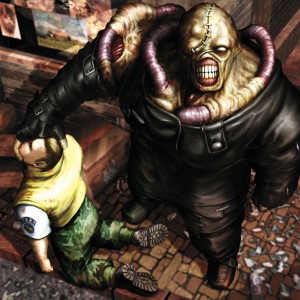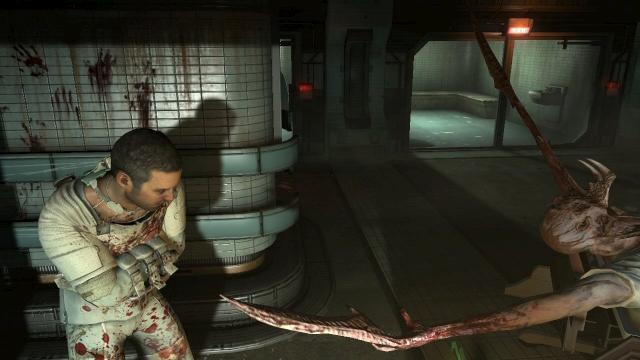
Horror is a brilliant genre, it takes our primal fears and faces them head on, it scares us and it unravels us, but more and more it seems to have become banal, at least on film. Even things that are new are recycling old ideas with new camera shots. After all, an empty, boring campfire ghost story told via CCTV is still an empty, boring campfire ghost story. But the genre is still vibrant and exciting despite the lack of great films, because video games are picking up the slack with aplomb. So here’s why all you horror fans should be picking up your controllers.
Contemporary horror movies are forever trying to find new approaches to tension. Every angle and edit has been shot to find a different way of presenting tension and terror. With changing audiences, and ones that have increasingly seen it all before, the race is constantly on to show something new and unexpected. But it’s getting harder and harder to scare horror fans, they’ve gone from nail-biting to beard-stroking, and more often than not, laughing. So how do you scare a horror fan? Easy: Dead Space, Amnesia, Project Zero, Siren: Blood Curse, Silent Hill.
Now it’s clear that horror games owe a huge amount to film. Most of them are based entirely on the same premises. Resident Evil is Night of the Living Dead, Deadly Premonition is Twin Peaks, Dead Space owes a lot to Alien and Event Horizon. But these origins don’t dull the impact of the games, because they succeed as horror so comprehensively by being a game. When you watch a person in peril it’s possible to have some imaginative empathy, but when you are controlling, and therefore responsible for that person, you don’t need empathy, because it’s you.
Think about the slow steady-cam shot moving down a corridor. Is that really scary any more, or does it come with such a weight of expectation that anything that happens afterwards is never more than what is expected? Now put yourself in that corridor, in a basement, in a sewer, look around yourself to find a terrifying figure in pursuit. Now run. Isn’t that more exhilarating than watching a fictional character do it? Games have the massive advantage of giving you agency, putting you in peril, and forcing you to find out how to survive.

This generation has seen a leap forward big enough to create some very convincing horror universes, but earlier on in horror games, the medium was already showing it’s affinity for fear. I remember playing Alien on the Commodore 64, that terrifying monochrome sprite turning towards me gave me such a shock. Later, in the PSOne era, the two great horror masterpieces were Resident Evil and Silent Hill. They defined survival horror, and even with their relative graphical simplicity they created consistently frightening and compelling environments.
Survival horror has several elements that make it what it is, but the chief factor is vulnerability. The enemies are all capable of killing you quickly if there are enough of them and you’re caught badly, there is a scarcity of weaponry and avoidance is often the best course of action. Particularly in the early games like Resident Evil it was the camera and player movement that significantly added to it, Chris and Jill moved like tanks. Also if you were badly injured your movement was hampered and you’d drag yourself around in a panic, unable to escape, a feature that has stuck right up to Dead Space. I’ll never forget limping over the bridge to catch the train with 2 seconds to spare at the end of the brilliant Resident Evil 2. Resident Evil 4 departed from the very filmic fixed camera angles of its prequels and employed the revolutionary over-the-shoulder cam, which was elegant but still didn’t afford too much tactical advantage, because there was no way to control the camera properly outside of Leon’s eye-line. It gave just enough, but not too much.
It’s easy to level complaints of bad scripting and acting to a lot of video games, but in horror, it’s almost expected anyway, so these early games stand up well to their B-movie predecessors. More recent games (in most genres) pay more attention to plot and character, and standards have risen, but structurally games have a huge advantage. The pacing and fear-factor remain just as good if not better than they ever were. And this is where Survival horror really comes in to its own.
Level design is all about the arrangement and timing of decisions, and over 30 years, developers have got extremely good at it. They’ve also got good at raising the stakes that rest upon those decisions. When it comes to Horror, each level or chapter is like a scene in a movie that must have a rise and release, a shape to its tension. Months are spent balancing and pacing them to get them just right, in a way that movie makers simply don’t have the budget to do, once a game is built, it can be changed infinitely, a film company can rarely afford to reshoot a scene to the extent that a game can change though. The result is a Horror experience that is consistently scary, exciting and cathartic for upwards of 8 hours. That’s four films-worth of quality, relentless terror. Anyone who says that games don’t offer value for money is sorely mistaken. They are rides of panic, mystery and discovery, and they test you in a way a film cannot. Within the bounds of the horror genre, with its basic modus operandi to ‘be scary’, video games are the superior medium. It’s also one gaming genre that is good to watch too, and there’s nothing like tag-teaming a good survival horror. So when you next fancy a night in and a fright-fest, instead of sticking on Sharktopus again, consider sharing the controller and working your way through Project Zero. Or watching your mate/boyfriend/whatever hyperventilate his way through the opening of Dead Space two with the strait-jacketed Isaac Clarke. That’s real horror. I mean seriously, it’s some scary shit.

Brilliantly done Tom. I totally agree with you. Great read. 🙂